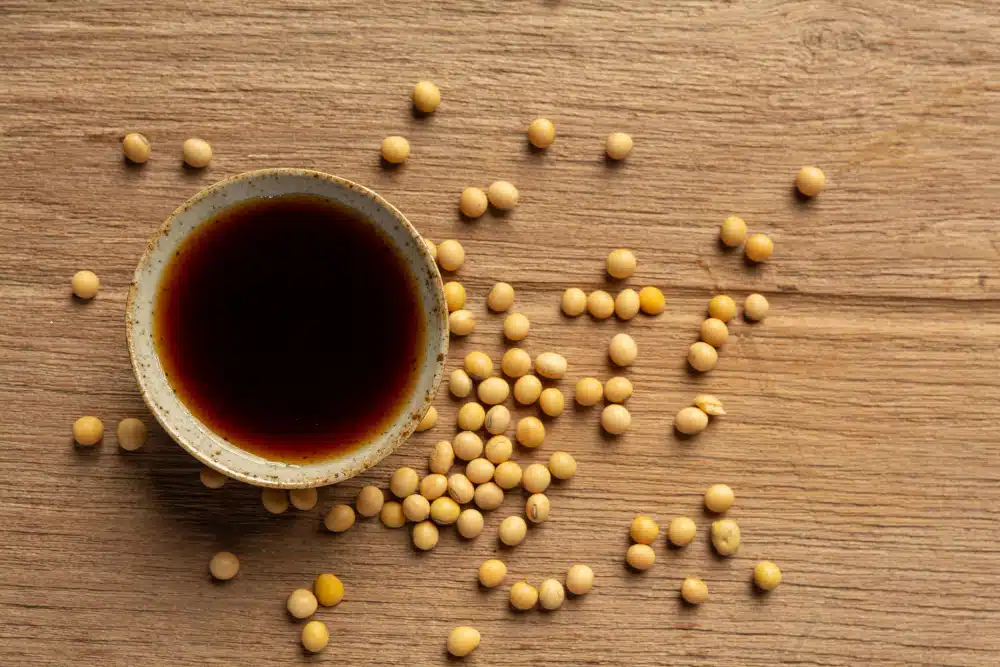Soy sauce substitutes can feel challenging to find if you love cooking Asian-inspired dishes but can’t tolerate soy or gluten. Traditional soy sauce adds salty, umami depth to stir-fries, marinades, and dipping sauces—but it isn’t suitable for everyone. Whether you’re following a gluten-free diet, avoiding soy for health reasons, or simply exploring healthier alternatives, this guide covers the best soy sauce substitutes available. You’ll discover store-bought options, homemade recipes, and practical tips for making flavorful swaps without compromising taste.
Why You Might Need a Soy Sauce Substitute
Before diving into alternatives, let’s explore why many people look for substitutes:
- Gluten sensitivity or celiac disease: Most traditional soy sauces contain wheat.
- Soy allergies or intolerance: Some people experience digestive or immune reactions.
- Low-sodium needs: Standard soy sauce can be very high in salt.
- Clean eating or paleo lifestyles: Many clean-eating plans avoid heavily processed sauces.
Fortunately, there are plenty of flavorful alternatives to fit your dietary needs.
Best Soy Sauce Substitutes for Gluten-Free Eaters
If you don’t need to avoid soy but want to skip gluten, here are the best choices:
Tamari
- What it is: A Japanese soy sauce brewed without wheat.
- Why it works: Nearly identical taste to regular soy sauce—rich, smooth, and slightly less salty.
- Best use: Stir-fries, dipping sauces, and sushi.
- Tip: Always check the label—some tamari brands still contain small amounts of wheat.
Gluten-Free Soy Sauce
- What it is: Specially made soy sauce using rice instead of wheat.
- Why it works: Same flavor profile with a safe, gluten-free label.
- Best use: Any recipe calling for soy sauce.
Best Soy Sauce Substitutes for Soy-Free Eaters
For those avoiding soy altogether, these alternatives shine:
Coconut Aminos
- What it is: A sauce made from fermented coconut sap and sea salt.
- Flavor profile: Slightly sweeter, less salty, but with deep umami flavor.
- Best use: Marinades, stir-fries, salad dressings.
- Bonus: Lower in sodium than soy sauce.
Liquid Aminos (Non-Soy Varieties)
- What it is: Seasonings made from fermented proteins (some soy-free versions use chickpeas).
- Flavor profile: Savory, salty, with a mild soy-like taste.
- Best use: Soups, noodles, and sautéed vegetables.
Fish Sauce
- What it is: Fermented anchovies with salt.
- Flavor profile: Very strong, salty, and pungent—use sparingly.
- Best use: Thai curries, stir-fries, pho broth.
- Note: Not vegan-friendly.
Worcestershire Sauce
- What it is: A fermented condiment made from vinegar, molasses, anchovies, and spices.
- Flavor profile: Tangy, slightly sweet, and savory.
- Best use: Marinades, stews, sauces.
- Tip: Some brands contain gluten—read labels carefully.
Vegan and Allergy-Friendly Soy Sauce Substitutes
If you’re vegan, soy-free, and gluten-free, these options work well:
- Coconut aminos (vegan, soy-free, gluten-free)
- Homemade mushroom-based sauces for natural umami flavor
- Homemade balsamic and tamarind mix for a tangy depth

Homemade Soy Sauce Substitute Recipe
If you can’t find store-bought options, here’s a simple DIY substitute:
Ingredients:
- 2 cups vegetable broth
- 2 tablespoons balsamic vinegar
- 1 tablespoon molasses or maple syrup
- 1 teaspoon garlic powder
- 1 teaspoon onion powder
- ½ teaspoon ground ginger
- 1 tablespoon salt (or to taste)
Instructions:
- Combine all ingredients in a saucepan.
- Simmer for 15 minutes until slightly reduced.
- Cool and store in an airtight jar in the fridge for up to 2 weeks.
This homemade blend provides a salty, umami-rich alternative that’s both soy-free and gluten-free.
Step-by-Step Guide: How to Choose the Right Soy Sauce Substitute
Step 1: Identify Your Dietary Needs
- Gluten-free only → Choose tamari or certified gluten-free soy sauce.
- Soy-free → Coconut aminos, fish sauce, or homemade versions.
- Vegan and soy-free → Coconut aminos or mushroom-based sauce.
Step 2: Consider Flavor Profiles
- Sweeter option → Coconut aminos.
- Tangy option → Worcestershire sauce.
- Bold, salty punch → Fish sauce.
Step 3: Adjust Quantities
- Start with slightly less substitute than soy sauce and adjust to taste.
- Add extra salt if needed—some substitutes are milder.
Step 4: Experiment
- Mix coconut aminos with a splash of vinegar for extra tang.
- Combine mushroom broth and balsamic for deep flavor.
FAQs About Soy Sauce Substitutes
1. What is the best gluten-free soy sauce substitute?
The best option is tamari, as it’s traditionally brewed without wheat and has a flavor almost identical to soy sauce.
2. What can I use instead of soy sauce if I’m allergic to soy?
Coconut aminos are the top soy-free substitute, offering a naturally sweet and savory flavor that works in most recipes.
3. Is coconut aminos healthier than soy sauce?
Yes. Coconut aminos have about 70% less sodium and are soy-free, gluten-free, and vegan-friendly.
4. Can I replace soy sauce with Worcestershire sauce?
Yes, but expect a different flavor. Worcestershire is tangier and slightly sweet, so it works best in marinades and sauces rather than stir-fries.
5. Can I make a soy sauce substitute at home?
Absolutely! A simple combination of vegetable broth, balsamic vinegar, and spices can mimic soy sauce flavor without soy or gluten.
6. What is the closest flavor match to soy sauce?
Tamari provides the closest taste and texture, making it the ideal one-to-one substitute.
Conclusion: Finding the Right Soy Sauce Substitute
Soy Sauce Substitutes let you enjoy all your favorite recipes without giving up flavor, even if you’re avoiding soy or gluten. With options like tamari, coconut aminos, fish sauce, or homemade blends, you can keep cooking delicious meals without worry. The key is to choose the substitute that best matches your dietary needs and flavor preferences.
Call to Action: Next time you cook, try swapping soy sauce with one of these alternatives—you’ll be surprised at how versatile and delicious these substitutes can be!






